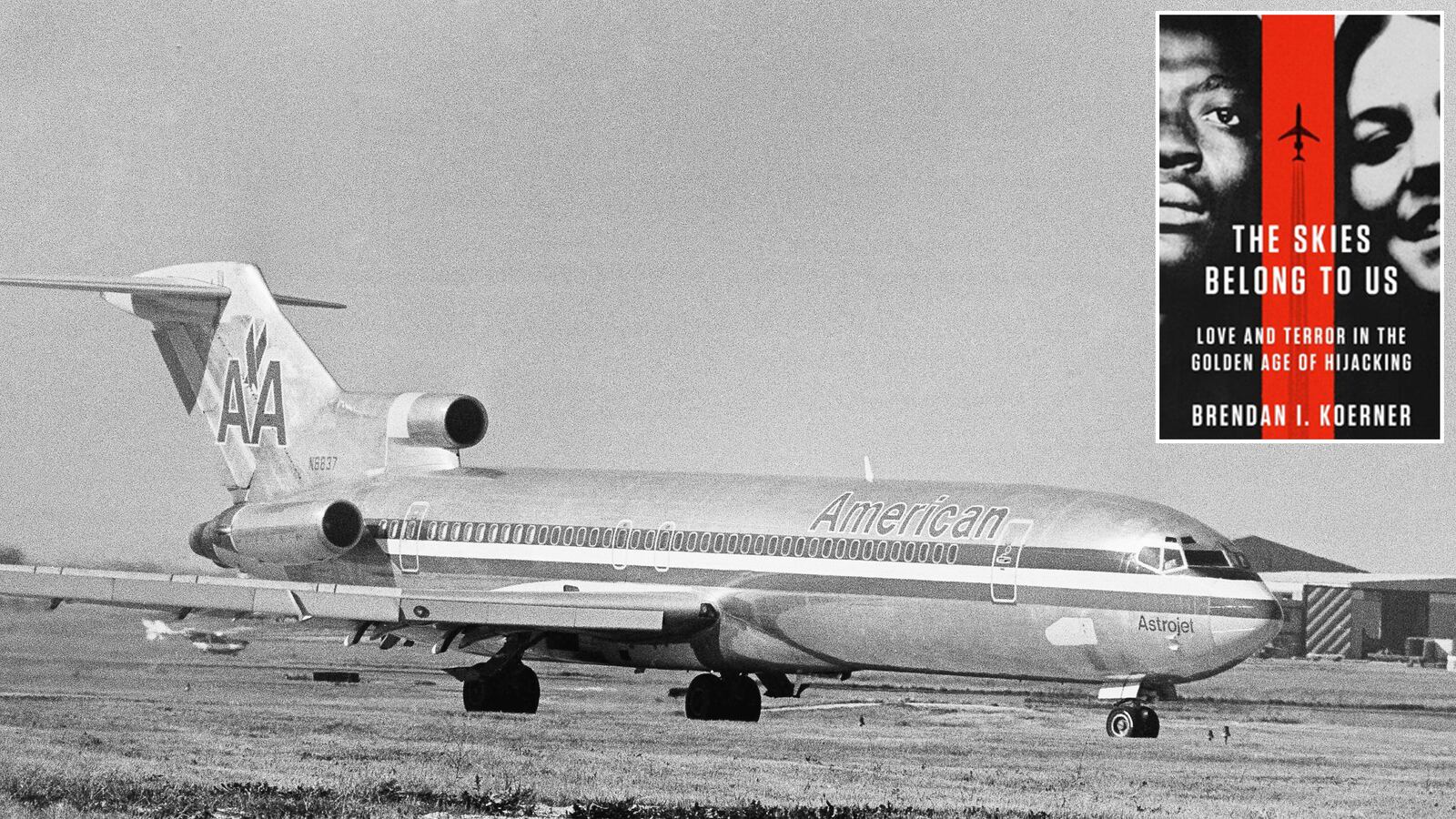Lengthy and intrusive airport security procedures, disquiet over the TSA’s more elaborate innovations notwithstanding, are largely accepted as a matter of routine nowadays, even when one is subjected to phone-tapping, garbage-sifting-level scrutiny. Last year, I took a flight from Germany to Israel on the latter’s flag carrier, El Al—known as the world’s most secure airline, with no successful hijackings since their first and only more than four decades ago—and I was “selected” as a suspicious passenger. Probably on account of being a lone female not in her country of origin, I was given a pre-check-in inquisition on matters including, but not limited to, my work, my family, my romantic status, my travel history, my reasons for visiting Israel, and whether or not I’d packed a bathing suit. The 30-minute conversation began to conclude only when I handed my smartphone to the uniformed interrogator, so he could read emails between me and the friend I’d arranged to meet in Tel Aviv.

Whose idea was it, he wondered, to take the trip? How long had we known each other? Under what circumstances had we first become acquainted? And did I know any Arabs or Muslims? Meanwhile his colleague, who’d stepped away to Google me and the publications I write for, signaled a gesture that apparently green-lit the next stage of assessment. Compared with explaining what, exactly, had compelled me to spend a few days sightseeing in the Holy Land, this part was easy: I watched as each of my possessions was removed from my baggage, briefly inspected, and scanned with an explosives detector—including the travel guides that, when mentioned during the cross-examination, clearly elicited a mental checkmark in the “probably a bona fide tourist” column. A 2009 trip to Morocco, on the other hand, earned me a tick in the “theoretical terrorist threat” column and a query as to whether I’d “kept in touch” with anyone from that country.
So I was stunned and amused to learn from Brendan I. Koerner’s riveting new book, The Skies Belong to Us: Love and Terror in the Golden Age of Hijacking, that back in the ’60s and early ’70s, airlines in the United States and many other countries barely employed any procedures to keep deadly weapons off aircraft, let alone investigated their passengers’ intercontinental alliances and swimwear. In the mood to commandeer a Boeing 727 and demand half a million dollars in ransom? All you had to do was board with your submachine gun in a trombone case, as Martin McNally did at St. Louis airport in 1972. Real and pretend bombs, hand grenades, loaded pistols, knives, large quantities of gasoline, all were freely carried onto planes in pockets and bags. “It was once possible,” writes Koerner, “to pass through an entire airport, from curbside to gate, without encountering a single inconvenience—no X-ray machines, no metal detectors, no uniformed security personnel with grabby hands and bitter dispositions.”
Brilliantly evoking the atmosphere of the era with its bubbling racial tensions, Vietnam War disillusionment, and marijuana fug, The Skies Belong to Us weaves a vivid retelling of America’s longest-distance hijacking and its globe-spanning, stranger-than-fiction aftermath with the history of this most mediagenic of crimes—from the first seizing of a plane in U.S. airspace, in 1961, to the international epidemic of hijacking between 1968 and 1972, when pilots and their crews were “skyjacked” with such alarming regularity that it wasn’t unheard of for two flights to fall victim on the same day.

By the time a striking young Californian couple named Roger Holder and Cathy Kerkow had decided to take charge of Western Airlines flight 701 from Los Angeles to Seattle on June 2, 1972, the airlines had finally and grudgingly implemented some measures to stem the tide of skyjackings. The idea of searching carry-on bags and asking passengers to empty their pockets for inspection was scoffed at: with commercial air travel booming, the last thing airlines wanted was to inconvenience paying customers. And complying with a skyjacking, which almost invariably meant diverting to Cuba, was a trifling expense compared with buying metal detectors and X-ray machines, not to mention paying staff to operate them.
Still, the status quo practically amounted to an engraved invitation to any opportunist with a reckless impulse and a hankering for sunnier climes. So in November 1969, ticket agents began profiling male passengers (a female skyjacker was inconceivable) based on vague criteria, such as failing to make eye contact. Accordingly, a miniscule number of boarding-pass holders were asked to step into a private area, where they were checked with hand-held metal detectors. A few arrests were made and the number of skyjackings temporarily dropped, but the new system’s uselessness was evident by the summer of 1971, when airplane pirates were striking nearly every week.
Holder, a 22-year-old African-American Vietnam veteran, and Kerkow, a fun-loving 20-year-old masseuse enamored of her bookish firebrand boyfriend, could have been flagged based on one of the official screening criteria: paying for tickets by unconventional means. First Kerkow tried to pass a bad check, then when that was discovered, she successfully exchanged an unused round-trip ticket to Seattle, mailed to her by her father, for two one-way tickets. The remainder of the escapade’s execution, masterminded by Holder, was equally haphazard. Wielding a briefcase that he claimed held a bomb, the lanky bespectacled youth, clad in full army regalia and chain-smoking joints, oversaw a 30-hour saga involving the collection of $500,000 in ransom, a change of planes at San Francisco, refueling at Kennedy, and—instead of Hanoi, his initial choice of destination—a final stop in Algiers, where Holder demanded to be met by exiled Black Panther leader Eldridge Cleaver.
Holder’s motivations for such drastic measures were confused: ostensibly, his central aim was freeing radical communist philosopher Angela Davis, who was on trial for murder charges, and facilitating her political asylum in North Vietnam. But when Davis, understandably, wanted no part of the scheme, and a prevaricating pilot told Holder that she’d actually just been acquitted, he simply assumed the cosmos had a different plan for his taking the international stage. That hunger for recognition, in Koerner’s eloquent analysis, was the one common element in all skyjackers: “By seizing a jet as it hurtled across the nation’s most exotic frontier, a lone skyjacker could instantly command an audience of millions. There was no more spectacular way for the marginalized to feel the rush of power.” In the months before the events that did, indeed, make him world famous, Holder—traumatized by his experiences in Vietnam, anxious, paranoid, and deeply embittered over the way the army had treated him—had disengaged from society, spending all his time looking to astrology for guidance and brooding over how to repair his broken dreams.
Once a plan was formulated, his loyal girlfriend needed no persuasion to participate in the grand adventure—although it’s unlikely that the impetuous, rebellious Kerkow, who in the course of the narrative evolves from an awed, easily led girl to a shrewd and formidable woman, had any inkling of how it would irrevocably change her life. After stepping on that plane in Los Angeles, as far as Koerner knows she was never seen in the U.S. again. Holder, however, did return to his native country after living first in Algeria then for many years in France, where he and Kerkow were feted as political heroes by leftist intellectuals while the American and French governments wrangled over their legal fates. The ailing ex-fugitive was eventually tracked down by Koerner in San Diego, as his unputdownable final section reveals.
The golden age of hijacking drew to a close in December 1972, when the Nixon administration announced that, without exception, all airline passengers would henceforth be screened with metal detectors and the contents of every carry-on bag would be inspected. Contrary to expectation, most people submitted to the new regime uncomplainingly. Then, as the skyjacking threat faded into the past, security began to be seen as less important, a burdensome expense to skimp on; according to Koerner, in 2000 an airport security officer earned, on average, $12,000 annually. Also, airlines had never updated their policies for dealing with hijackers, which stipulated total compliance with all demands. “No one in a position of authority,” Koerner remarks, “fathomed a scenario in which skyjackers would have no interest in using their hostages as bargaining chips.” But as The Skies Belong to Us so entertainingly and insightfully demonstrates, even a recent historical era can seem not merely like a different time, but like a different planet.






